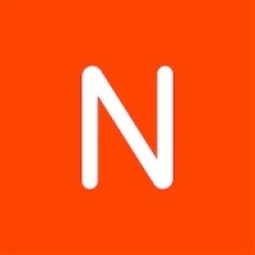公司规模
Large Corporate
地区
- America
国家
- United States
产品
- EthicsPoint
技术栈
- Hotline Intake
- Incident Management
- Awareness Solutions
实施规模
- Enterprise-wide Deployment
技术
- 功能应用 - 企业资源规划系统 (ERP)
适用功能
- 商业运营
- 人力资源
用例
- 欺诈识别
- 监管合规监控
服务
- 软件设计与工程服务
- 系统集成
关于客户
Fulton Financial Corporation is a $16.9 billion financial holding company based in Lancaster, Pennsylvania. The company provides a wide range of financial products and personalized services in Pennsylvania, Maryland, Delaware, Virginia, and New Jersey. Fulton is comprised of several different banking subsidiaries, and offers comprehensive products and services provided by talented employees who care about each and every relationship. The company has over 3,500 employees.
挑战
Fulton Financial Corporation, a part of the highly-regulated banking industry, had been using an internal system to meet federal requirements and identify potential risks early. However, this system did not instill confidence among employees, had limited functionality, and was difficult to staff. The company wanted to take a more proactive approach to risk, especially in the current economy where financial organizations are under increased pressure. They needed a new reporting system that would boost employee confidence and help mitigate risk.
解决方案
Fulton Financial Corporation selected EthicsPoint to provide employees with a safe, anonymous way to report any suspected fraud or misconduct. The company worked with NAVEX Global’s Implementation team to configure its EthicsPoint system. The system was modified to ensure clarity and ease of use. EthicsPoint allows Fulton to sort data into categories, analyze trends at each of its subsidiaries, and notify three departments automatically when a report is submitted: Legal, Human Resources, and Internal Audit. This setup helps keep everybody accountable with a system of checks and balances.
运营影响

Case Study missing?
Start adding your own!
Register with your work email and create a new case study profile for your business.
相关案例.

Case Study
Remote Monitoring for Environmental Compliance
Emerson wanted to provide a connected environmental analyzer to their customers. They wanted to leverage IoT technologies to provide a software solution that was easy to use, real-time and centralized. Compliance with pollution control board guidelines and the ability to remotely calibrate and troubleshoot these devices was the primary objective. Requirements - Centralized Remote Monitoring. - IoT Based Smart Environmental Analyzers. - Remote Calibration and Troubleshooting. - User Friendly Application. - Reporting & Dashboards. - Compliance with pollution control board guidelines.

Case Study
ELI LILLY ADOPTS MICROMEDIA’S ALERT NOTIFICATION SYSTEM
Pharmaceutical production is subject to a strict set of enforced rules that must be adhered to and compliance to these standards is critically necessary. Due to the efforts of WIN 911’s strategic partner Micromedia, Lilly was able to adopt an alarm notification infrastructure that integrated smoothly with their existing workflows and emergency hardware and protocols. These raw energy sources enable the industrial process to function: electricity, WIN-911 Software | 4020 South Industrial Drive, Suite 120 | Austin, TX 78744 USA industrial steam, iced water, air mixtures of varying quality. Refrigeration towers, boilers and wastewater are monitored by ALERT. Eli Lilly identified 15000 potential variables, but limitations compelled them to chisel the variable list down to 300. This allowed all major alarms to be covered including pressure, discharge, quantity of waste water discharged,temperature, carbon dioxide content, oxygen & sulphur content, and the water’s pH.

Case Study
IoT Solutions Give Commercial Fishing Real-time insights
Technology to support vessels in the commercial fishing industry had not changed significantly since the advent of radar. Over the past 40 years commercial fishing in the United States has continued to be one of the most active, yet regulated industries. The combination of federal regulations and lack of technology created an opportunity for Faria Watchdog to go-to-market with a solution.

Case Study
Largest Production Deployment of AI and IoT Applications
To increase efficiency, develop new services, and spread a digital culture across the organization, Enel is executing an enterprise-wide digitalization strategy. Central to achieving the Fortune 100 company’s goals is the large-scale deployment of the C3 AI Suite and applications. Enel operates the world’s largest enterprise IoT system with 20 million smart meters across Italy and Spain.

Case Study
KeyBank's Digital Transformation with Confluent's Data in Motion
KeyBank, one of the nation's largest bank-based financial services companies, embarked on a national digital bank initiative following the acquisition of Laurel Road, a digital consumer lending business. The initiative aimed to build a digital bank focused on healthcare professionals looking to refinance student loans and buy homes. A significant challenge was reducing the time to market for new products by democratizing data and decoupling systems across the IT landscape. Like many large enterprises, KeyBank had a variety of vendor applications, custom applications, and other systems that were tightly coupled to one another. New projects often required developing specific point-to-point integrations for exchanging data, which did not address the needs of other downstream systems that could benefit from the same data.
Case Study
BharatPe: Leveraging Google Cloud for Enhanced Data Analytics and AI to Promote Digital Payments
BharatPe, a fintech company founded in 2018, aimed to make digital payments more accessible for over 10 million small offline merchants and kirana store owners in India. However, the company faced challenges in managing the massive amounts of data generated daily from payment processing to business analysis. Prior to using Google Cloud, BharatPe managed its legacy data warehouse with limited capacity to run a large number of queries. The company ran key performance indicator (KPI) reports, without the ability to understand real-time data patterns. Loading three months of data for quarterly reports took more than 30 minutes on the legacy system, and in some cases, queries failed because the system could not scale to support analytical needs. Additionally, BharatPe operates in a multi-cloud environment for disaster recovery and needed a data platform that could run queries against data, regardless of where it resides.







